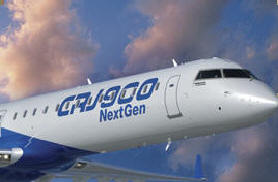
 |
NEWSROOM |
|
|
|
||||
|
Flight Standards Regional Offices To Have NextGen Specialists By Daniel Guevarra |
||||
 |
September 22, 2009, The FAA’s safety organization is locating NextGen specialists at every Flight Standards regional office to make sure the safety workforce is up to speed on the high-tech systems and procedures that are transforming the national air transportation system. These NextGen liaisons will facilitate understanding of the big picture and make sure the FAA’s safety workforce sees, knows, and understands where the agency is headed with NextGen. FAA Administrator Randy Babbit unveiled the plan at a recent conference on NextGen implementation, explaining that the newly assigned specialists will ensure that the approval aspects of NextGen are in gear. |
|||
|
“Let’s face it: equipment and procedures aren’t going to amount to much if the players don’t know where it all fits and how it all works,” Babbitt added. “I’m going to make sure that when NextGen shows up at the door, our safety workforce knows exactly what’s in the box.” If employees understand NextGen, they are more likely to accept it and take advantage of its capabilities. “The natural tendency is to be apprehensive about the unfamiliar,” Babbitt said. “NextGen is not a leap of faith. Not only is it the smart way to go, it’s the only way to go.” The NextGen plan will consist of new concepts and capabilities for air traffic management and communications, navigations, and surveillance that will involve: transitioning from a ground-based radar system to a more automated, aircraft-centered, satellite-based surveillance system; developing more direct and efficient routes through the airspace; improving aviation weather systems; developing data communications capabilities between aircraft and the ground to reduce controller and pilot workload per aircraft; and creating shared and distributed information technology architectures. An important part of NextGen is the establishment of new routes and procedures that rely on satellite-based navigation. FAA first implemented RNAV in 2001 and RNP in 2005 as a way to increase national airspace capacity and efficiency. Since 2001, FAA has published 270 RNAV approach and departure procedures, 159 RNAV routes, and 148 RNP approach procedures. FAA’s goals are to annually publish 50 RNAV approach and departure procedures, 12 RNAV routes, and 50 RNP approach procedures through 2013. There are important differences between conventional route procedures and RNAV/RNP. Traditionally, aircraft have flown conventional routes adhering to the ground-based navigational infrastructure, which requires aircraft to fly in a zigzag pattern so that they can be tracked by air traffic control radar systems. RNAV and RNP increase airspace efficiency by providing more direct paths. For RNAV, aircraft use an on-board Global Positioning System (GPS) to fly any desired flight path without the limitations imposed by ground-based navigation systems. RNP is a form of RNAV that adds monitoring and alerting capabilities to the cockpit to guide aircraft more precisely to and from airports. Currently, RNP routes are only available to specially equipped aircraft and trained aircrews, and air carriers must meet certain qualifications to fly these RNP approaches. |
||||
| ©AvStop Online Magazine Contact Us Return To News | ||||